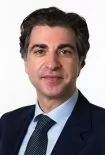- within Environment topic(s)
In the EU it is possible to obtain a supplementary protection certificate (SPC) for 'active substances' of a plant protection product (PPP) and 'active ingredients' of a medicinal product extending the protection afforded to such products beyond the patent term. Two distinct but related EC Regulations govern the grant of SPCs – Regulation No 1610/96 (the PPP SPC Regulation) and Regulation No. 469/2009 (the Medicinal Product SPC Regulation). It is generally accepted that equivalent provisions in the SPC Regulations should be interpreted in the same way but is this assumption correct?
The CJEU has considered the question of what is meant by 'product' and 'active ingredient' in the Medicinal Product SPC Regulation in a number of cases. The equivalent terms - 'product' and 'active substance' - in the PPP SPC Regulation have recently been considered by the CJEU in its decision of 19 June 2014 in the Bayer CropScience reference from the German Federal Patent Court in case C-11/13.
Bayer CropScience reference
By way of background, the applicant Bayer CropScience is the holder of a European patent, issued in Germany in 1994 covering isoxadifen, a safener - a substance intended to prevent the harmful action of a herbicide in plants. In March 2003, Bayer CropScience obtained a provisional marketing authorisation (MA) in Germany for the plant protection product Maister containing: foramsulfuron, iodosulfuron and isoxadifen. Shortly thereafter, in July 2003, Bayer CropScience applied to the German Patent and Trademark office for an SPC for the safener isoxadifen.
In 2007, the German Patent and Trademark office rejected the SPC application, which Bayer CropScience appealed. The German Federal Patent Court cited a number of factors for and against safeners being covered by the term 'active substance' (see table 1) before referring the case to the CJEU for a preliminary ruling. Consistent with the Opinion of 13 February 2014 of Advocate General Jääskinen, the CJEU has confirmed that it is possible for a safener to be covered by the terms 'product' and 'active substance' "where that substance has a toxic, phytotoxic or plant protection action of its own".
CJEU decision
In arriving at its decision, the CJEU noted that there was no express provision in the PPP SPC Regulation expressly preventing or allowing SPCs for safeners. The term 'active substances' in that Regulation relates to substances which have a toxic, phytotoxic or plant protection action of their own. Consequently, substances which do not act in this way cannot be the subject of an SPC. However, since the Regulation does not specify whether that action must be direct or indirect, there is no need to restrict the term 'active substances' to those substances whose action is direct.
Although the CJEU states in its decision that it is for the referring court to decide whether the safener at issue is an 'active substance', it adds that falling within the definition of 'active substances' is not enough and the four conditions in Article 3(1) of the PPP SPC Regulation still need to be satisfied. In particular, there must be a valid MA for the product as a plant protection product granted in accordance with Article 4 of Directive 91/414 or an equivalent provision of national law.
The CJEU has agreed with the AG that the grant of SPCs is regulated autonomously by the PPP SPC Regulation. Thus despite the link between the PPP SPC Regulation and Directive 91/414 governing the placing of plant protection products on the market (repealed and replaced by Regulation 1107/2009), the fact that Directive 91/414 does not treat safeners in the same way as active substances does not, on its own, prevent an SPC being granted for a safener. What is more important to the CJEU is whether the commercial exploitation of a patent for that safener has been delayed by the requirements in Directive 91/414.
Under Directive 91/414 active substances (as defined thereunder) must be listed in Annex I to the Directive and this list does not include safeners. Instead, safeners are regarded as 'co-formulants' and data concerning co-formulants must be included in the dossier in accordance with Annex III to the Directive. This requirement leads the CJEU to note that it is possible that the submission of a dossier for a plant protection product containing a safener has delayed the commercial exploitation of a patent for that safener. According to the CJEU, whether such delay has taken place will be important when the national court comes to decide whether a valid MA has been granted in accordance with Article 4 of Directive 91/414 for the condition in Article 3(1) of the PPP SPC Regulation to be satisfied.
Comment
A superficial reading of this latest CJEU decision could lead to the criticism that it is inconsistent with the decisions in MIT1 and GSK Biologicals2 relating to excipients and adjuvants for medicinal products and that a more liberal approach has been taken in relation to SPCs for plant protection products. The CJEU rejects such a proposition at paragraph 34 of the decision itself when it asserts that its interpretation "corresponds to that applied in respect of medicinal products, the Court already having had the opportunity to hold that a substance with no pharmaceutical effects of its own, such as an excipient or an adjuvant, does not constitute an active ingredient and, consequently, cannot give rise to the grant of a supplementary protection certificate". According to this logic, it should be possible for excipients and adjuvants of medicinal products to qualify for SPC protection if they are able to provide a therapeutic effect on their own.
The key to the CJEU decision is that the proposed active must have a toxic, phytotoxic or plant protection action of its own, such that, on the CJEU's reasoning, the same approach is being taken for both medicinal products and plant protection products. Despite the CJEU asserting that the PPP SPC Regulation is governed autonomously, their reasoning is hard to reconcile with the definitions of active substances and safeners under Regulation 1107/2009. Specifically, Article 2(3)(a) of that regulation defines safeners as "substances or preparations which are added to a plant protection product to eliminate or reduce phytotoxic effects of the plant protection product on certain plants". In other words, by definition safeners under this Regulation are not meant to have an independent active function of their own, but rather to operate in combination with other ingredients to reduce the activity of a plant protection product on certain plants.
It is interesting to note the emphasis placed by the CJEU on whether there has been regulatory delay in placing the safener in the market on the question of whether a valid MA has been granted. This purposive approach contrasts with MIT and GSK Biologicals (as well as other earlier cases) but is consistent with the approach taken in Neurim, Medeva and Georgetown I3. In this context, it is important to note that under the now applicable Regulation 1107/2009, repealing and replacing Directive 91/414, safeners shall be subject to the same requirements as active substances and included in a positive list of authorized safeners. Hence, in light of the fact that a regulatory approval with related delays in obtaining the approval is applicable for both safeners and active substances, the reasoning of the CJEU remains valid, thereby supporting the SPC for safeners.
As a corollary principle, a number of products currently regarded as 'fertilisers' or 'biostimulants', which have an indirect effect on the product, active substance and/or target organism and for which the Commission is currently assessing the need for new pre-marketing requirements, may need to be re-assessed for their potential to be covered by the definition of 'active substances' in the PPP SPC Regulation and therefore potentially qualify for SPC protection. This would be the case in particular if such products become subject to a similar regulatory regime as active substances/ingredients when seeking MAs where the applicant is considering applying for an SPC that includes one or more of those substances. This is because this will be a factor that national patent offices will need to consider when deciding whether to grant an SPC and whether the applicant has suffered regulatory delay in placing the product on the market.
The German Federal Patent Court has yet to apply this decision. It is open to debate whether the national court will, on the facts, come to the view that the safener isoxadifen has an action on its own and that all four conditions of Article 3(1) of the PPP SPC Regulation are satisfied to permit the grant of an SPC. We will also have to wait and see how national patent offices apply this latest decision – there is certainly scope yet again for inconsistent decisions in different Member States.
Table: The German Federal Patent Court's arguments for and against a safener being covered by the definition of 'active substance'
|
Safener = active substance |
Safener ≠ active substance |
|
|
Article first appeared in SPC Focus.
Footnotes
1. MIT C-431/04, EU:C:2006:291
2. GSK Biologicals C‑210/13, EU:C:2013:762
3. Cases C‑130/11, C‑322/10 and Case C‑422/10
The content of this article is intended to provide a general guide to the subject matter. Specialist advice should be sought about your specific circumstances.



